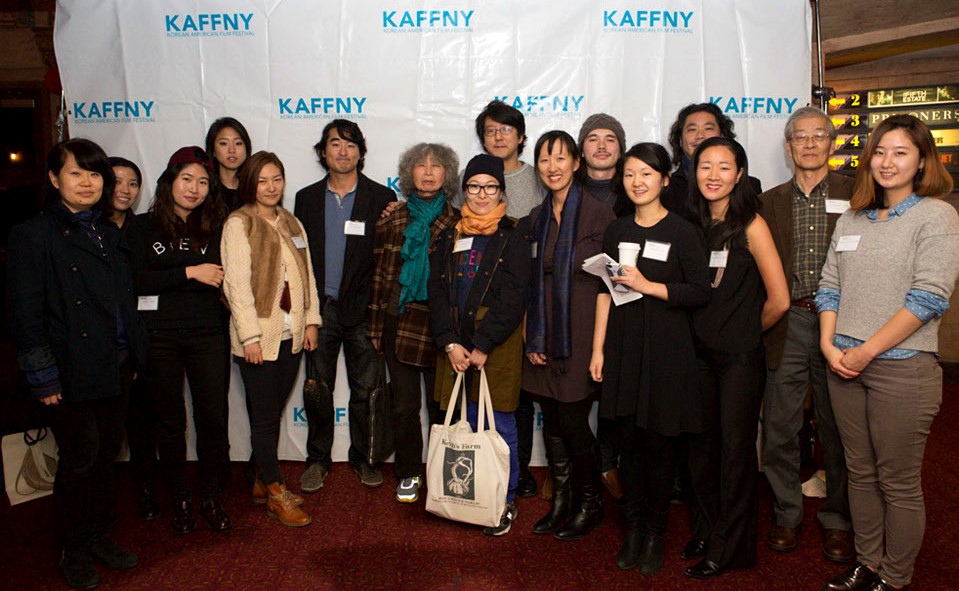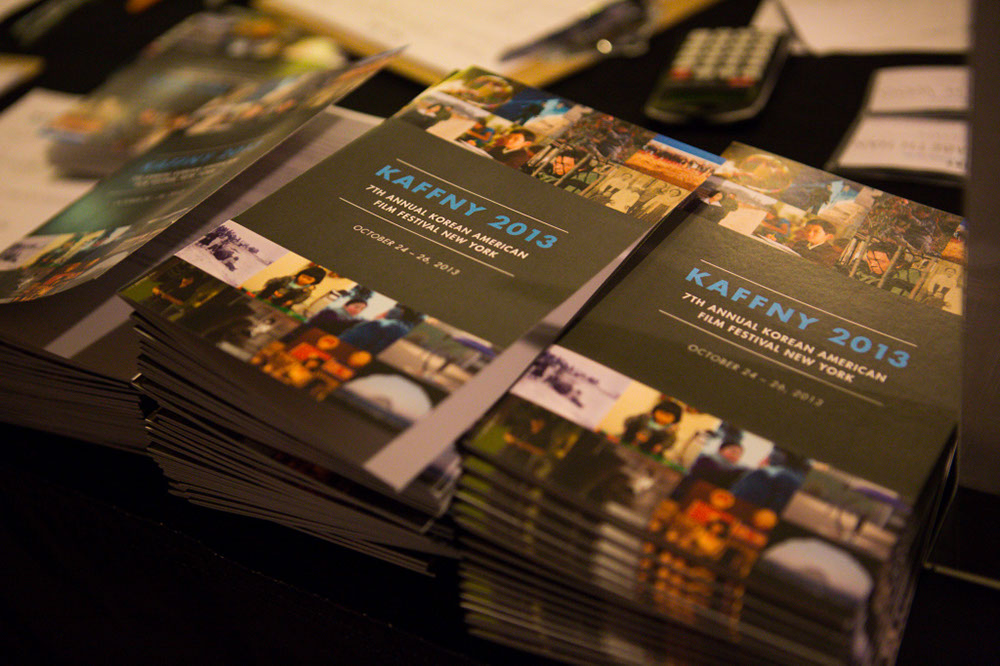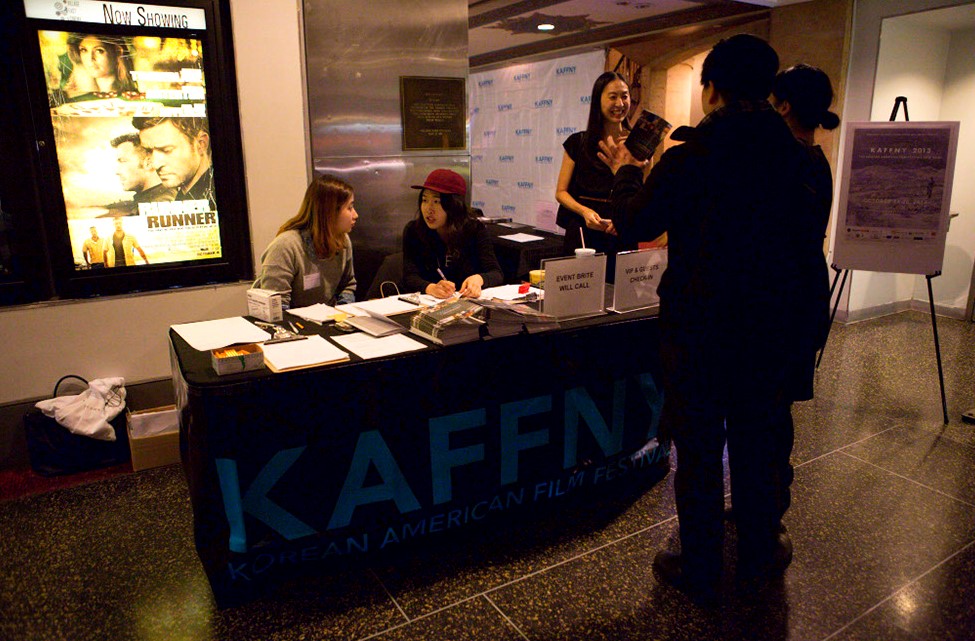Article by Wun Kuen Ng
The 7th Annual Korean American Film Festival New York 2013, October 24-26, 2013, closed out the festival with a feature film about a wounded South Korean soldier rescued by a young North Korea nurse during the Korean War. His identity is only disclosed when he has to return to South Korea to find his mother. Promised to come back for her, South Korean solider Il Gyu leaves behind a wooden model of a hospital North Korea nurse Son Ah wants to build after the war. It is a love story that endures the politics of the time between the two divided countries.
This year the festival commemorates the 60th anniversary of the Korean War Armistice. There were many good but heavy documentaries. John Woo, film editor, said that this particular feature film was chosen to close the festival because it sets a lighter mood, given the love story. This film version is exclusive and will only premiere in venues like the Korean film festival. When asked if he thought the film was propagandistic, he mentioned the audience would find the heart of the story lies within the love story, and the propaganda is an artistic style not a political vehicle.
The Other Side of the Mountain is based on true historical events of the Korean War 1950-53. The backdrop of the film centers on the chaos, deaths, and lost opportunities of this period. Il Gyu (Ryung Min Kim), a young man at the time was dragged off the street and forced to become a soldier to fight on the South Korean side. In the battlefield, he gets wounded; tearing off his uniform, he seeks help and knocks on the door of a North Korean household. A hunter father and a dedicated nurse daughter, Son Ah (Hyang Suk Kim) takes him in. During his stay, Il Gyu observes Son Ah’s selfless love toward her fellow villagers. Smitten, he promises to return to her, after he retrieves his mother from his hometown, No Gun Ri, so they can all live together. Upon arriving to Pyongyang, he bumps into an old soldier buddy, Kuk Hwa, who is now without a leg. Kuk Hwa tells Il Gyu that his mother died under the tunnel, where the American soldiers were told to round up and fire at the Korean civilians. Devastated, Il Gyu decides to return to North Korea to be with Son Ah, who never stops waiting for him. But tragedy and politics ensue, changing Il Gyu’s life once again.
The scenery in the film is luxuriously beautiful. In the West, the only image shown on the television set of North Korea is how Dictator Kim Jong Un is up to something strange. But there is more to North Korea than Kim Jong Un. The film was shot on location, on the September Mountain near Pyongyang. The film shows picturesque winter wonderland and colorful autumn landscape that is a feast for the eyes, especially the frozen waterfall, which looked like a Swarovski crystal sculpture. The natural vibrancy is also indicative of the North Koreans as well.
The acting was fresh and genuine. All cast members were North Koreans. There was no make-up, no stunt person, just pure talent. It was noted on the film’s website, OSOMFILM.COM, that the two main actors did fall in love during the shooting of the film, got marry after the film, and had a baby. The chemistry shows throughout the movie.
The film does have a pro-North Korean view, a critical view of South Korea, and an anti-American stance, but is it propaganda? Some would argue yes; others would say it is the Korean War told from the perspective of North Korea, and that it is a prerequisite for filming in North Korea. Whichever politics you take, whether for or against unification, still stuck on the political and psychological dissonance, the movie shows multi-facet sides of North Korea and people full of imagination. There is such love in making the film and capturing a group of people that is rarely exposed to the outside world. Art and creativity cross all boundaries.
During the Q & A session of the film, Joon Bai, the screenwriter and producer of the film said the film has not been seen in North Korea yet, maybe on April 15, Kim Il-sung’s birthday. This film was inspired by Bai’s fifteen years of humanitarian work in North Korean with the poor farmers and orphanages. Bai, a North Korean, himself, born in Hae Ryong, North Korea in 1937, became a refugee in South Korea during the Korean War in 1950, and came to the United States as a foreign exchange student studying B.S.M.E. in the University of Missouri in 1956. Through his humanitarian work, he was so moved by the beautiful North Koreans whom he wanted them to tell their story.
Due to low budget, the film crew stayed at farmhouses nearby. The farmhouses were uncomfortable, poor, without toilet, electricity, or heat. In the chilly mornings, they would shoot in the mountains with one camera, then eat sweet potatoes, corn, seaweed, as a meal, which were kept warm between clothes or their bodies. The extras did not get pay. Because the film was shot with only one camera, war scenes can’t be shot twice. Sound equipment has to be flown in for the first time in North Korean film history. Aside from this feature film, there has never been a film made in North Korean sync to sound. Due to lack of resources, the post-production has to be done in China, with the permission from the Department of Culture of North Korea. In a follow-up email interview with Bai, he had mentioned that making a film in North Korea is very different from making one in the United States. In North Korean, no one gets paid except with government rations. There is no union and no union regulation. Many things are done in the most basic and simple way due to limited resources.
The script took ten years to write, three years to get approved by both American and North Korean parties, and a total of six years to produce. Script negotiations were extremely tough. Many story lines were compromised because the North Koreans did not find it realistic for a South Korean man and a North Korean woman to fall in love. Version after version compromised, many scenes were edited out. Bai encouraged the audience to be open-minded, and unify through love. Even though North Koreans killed many, forgive them and look forward to peace, he advised. When he said “We are all han,” he meant the Korean word, “han,” which bares no English translation, “but it refers to the spirit of Korean people, their tragedy and soul, pride, loyalty.” Joon Bai said that the film was a part to release this Han, a deep grief, to offer something to all Koreans.
The film is an extraordinary accomplishment, an American made a film in North Korea with an all North Korean cast. The audience gets a rare glimpse of the extraordinary North Korean landscape. This in itself is worth the trip to the movie theater. The love story, at the heart of the movie has tear-jerking moments, which test one’s loyalty and the enduring power of love. One would hope that there would be more art joint ventures with North Korea so it can showcase the talent and ingenuity of its people.
According to Tae Yang Kwak, Associate Professor of History at Salameno School of American and International Studies of Ramapo College of New Jersey “Since peninsular division was a strong theme throughout the Film Festival, a film highlighting an appeal for reconciliation was certainly a meaningful choice to conclude the line-up.”
Full Cast & Crew
Director: In Hak Jang
Writing Credits: Joon Bai
Cast (in alphabetical order):
Hyang Suk Kim……Son Ah Song
Ryung Min Kim……Il Gyu Ri
Jung Taik Park……Su Jin
Produced by: Joon Bai (executive producer)
Music by: Tong Hwan Song
Cinematography by: Ryong Su Han
Film Edited by: Kwang Ok Kim
Runtime: 1 hr 43 min (103 min)
Korean with English subtitles.




Leave a Reply